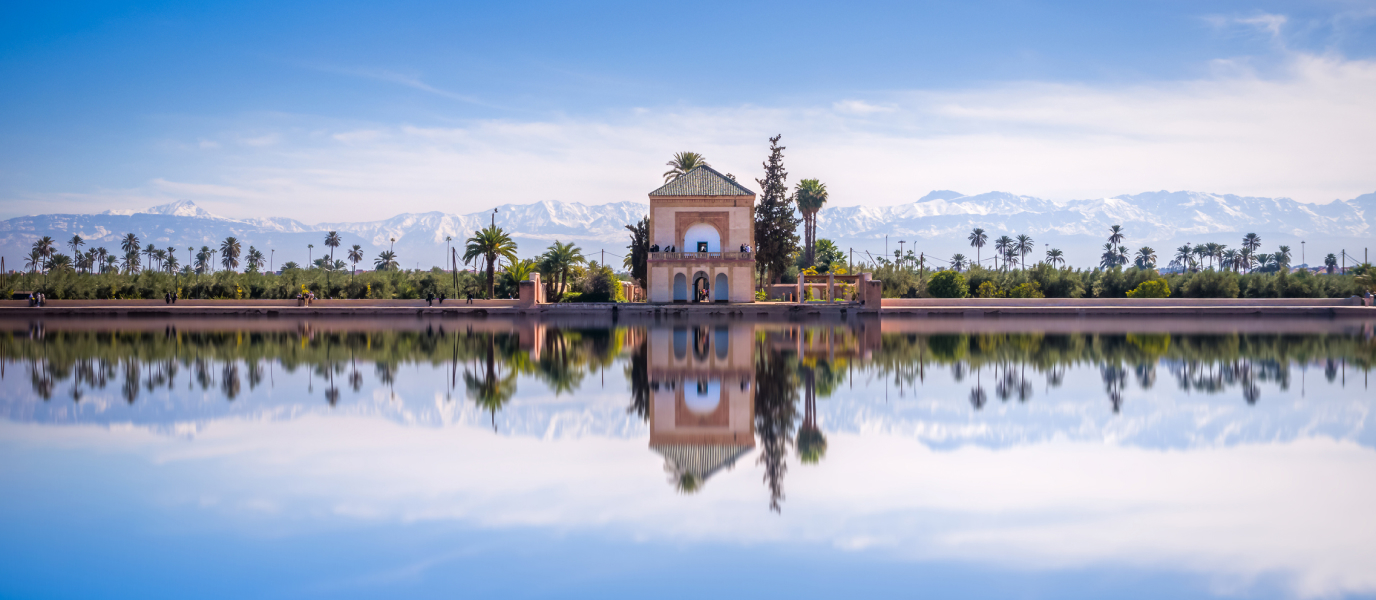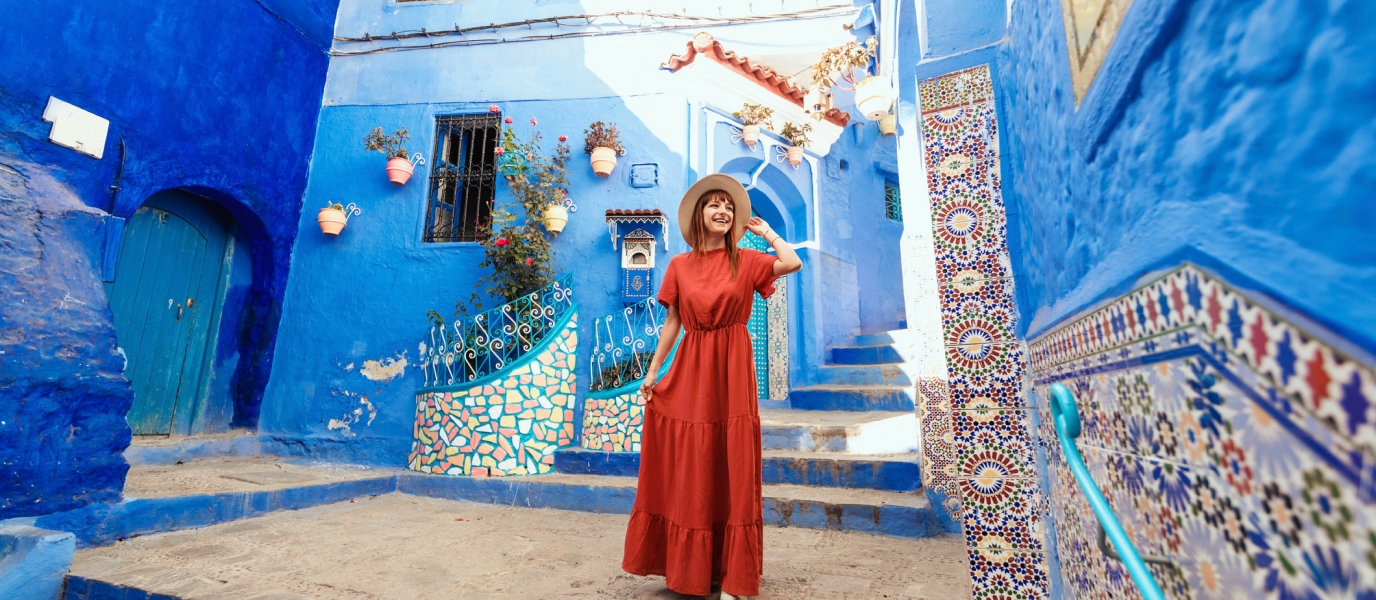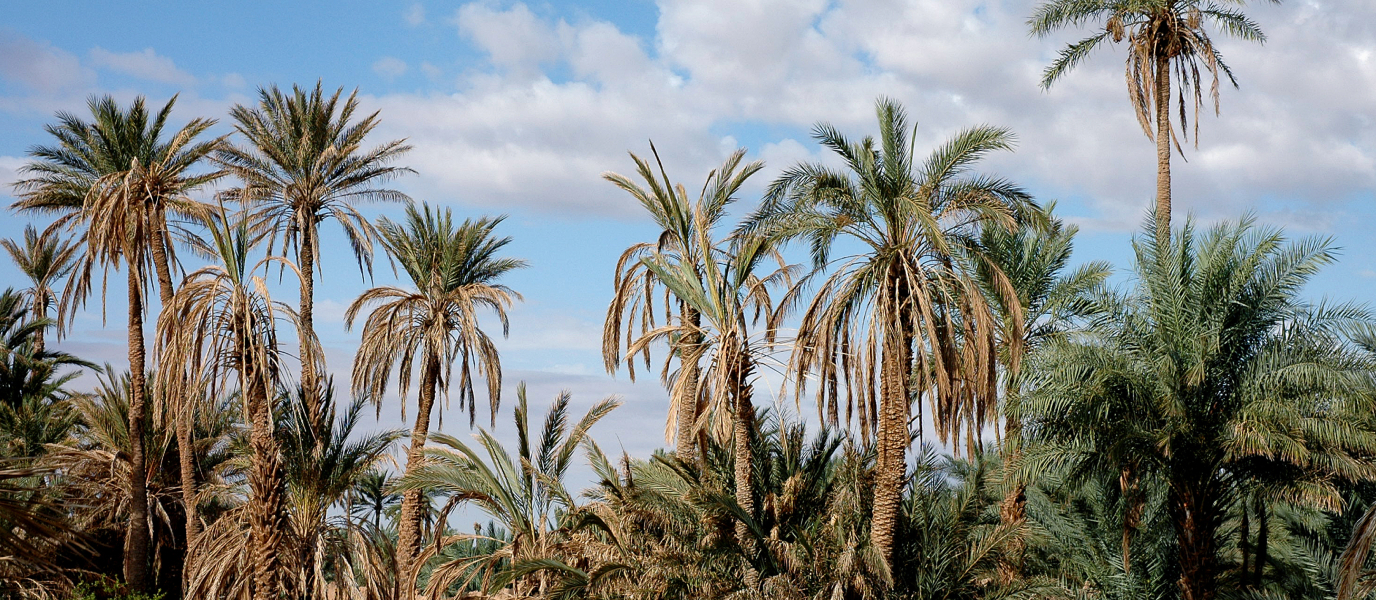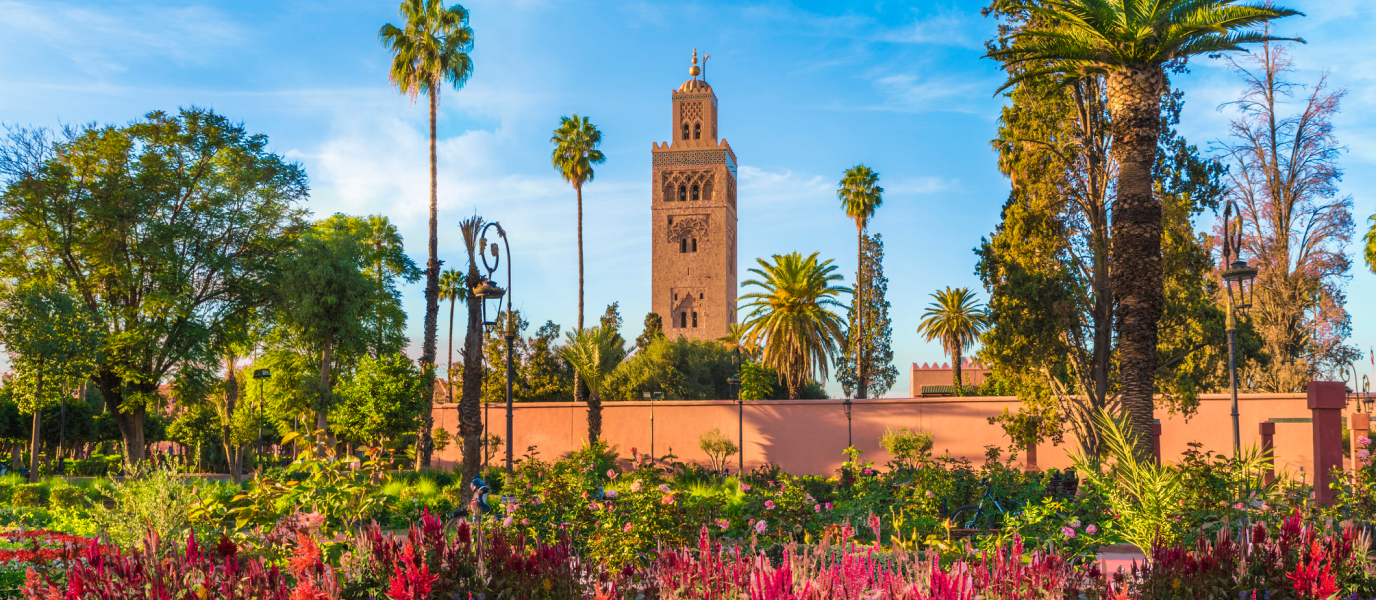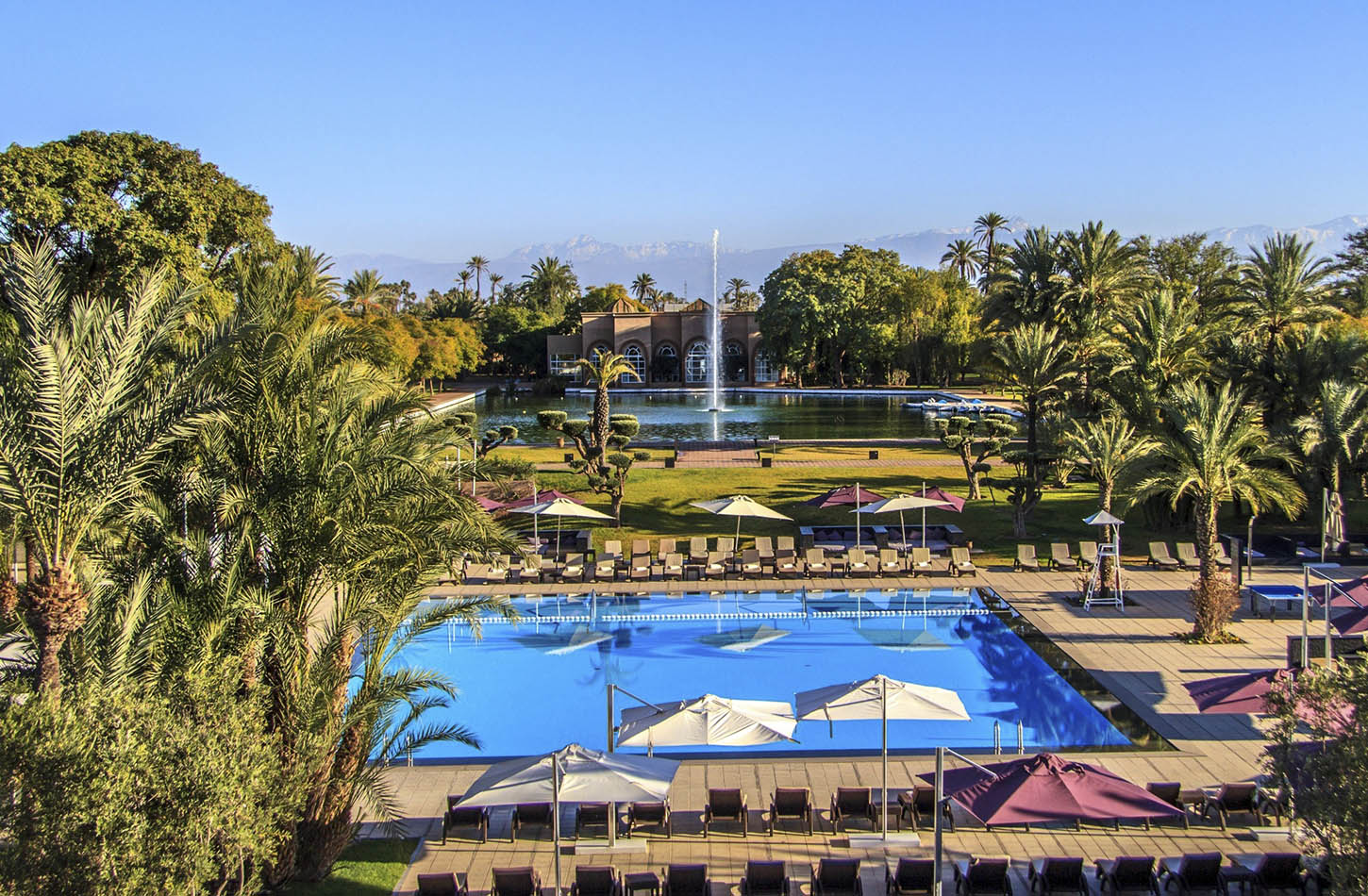The Menara Gardens are a haven of tranquility in the forever bustling Marrakesh. A lovingly cared-for natural setting, with a long history and offering spectacular views of the Atlas mountains. Just some of the reasons that this is a favourite haunt of both couples and families. Most people come here as evening falls, when the setting sun lengthens the shadows of the thousands of plants growing along the paths and in the squares, and tints everything with gold and red hues, making the place feel rather unreal.
For nine centuries, this has been one of the city’s most attractive spaces. It is also located next to the international airport, so many travellers make it the last visit of their stay, or come here for a break before beginning their journey home.
The Menara Gardens — agricultural origins
The Menara Gardens have been considered a space to enjoy nature and for recreation since the eighteenth century, when many of the olive trees that we see today (the gardens’ defining feature) were planted.
Defining feature apart from the artificial lake, that is. The lake has been supplied with water from the Atlas mountains since the Caliph Abd al Mu’Mim ordered the necessary infrastructure to be built in the twelfth century (the Almohad period) — for agricultural purposes. The lake is one of the most beautiful features of the Menara Gardens.
In the sixteenth century, the Menara Pavilion was built next to the gardens, on the order of Sultan Sidi Mohammed. However, the structure of the present building was drastically altered during its restoration in 1869. That is when it was decided to crown the building with a typical roof of green tiles in a pyramid shape, and this is where the complex gets its name from, as ‘menara’ means ‘tower’. In fact, after the restoration project, the pavilion resembled the tower of a fortress.
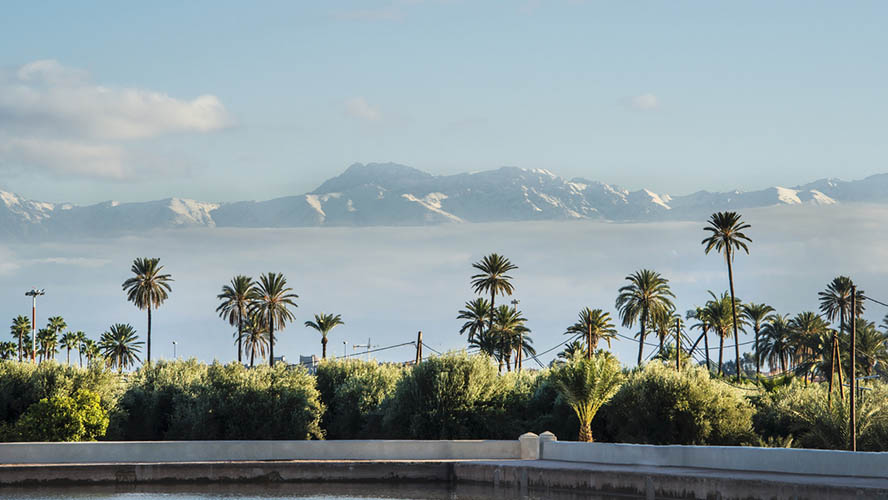
What to see in the Menara Gardens
First and foremost, the Menara Gardens are a vast olive plantation, with thousands of olive trees all perfectly aligned. Many of the trees are hundreds of years old, while others have replaced trees that have disappeared over time.
Within this maze of olive trees, there are also a large number of cypress and palm trees, as well as other species of trees and shrubs that, together, make up one of Marrakesh’s main green spaces, covering a total of over 100 hectares.
The best time to visit the Menara Gardens is either early in the morning or in the evening, particularly during very hot weather as, in spite of the undeniable beauty of this place, there is little shade.
At weekends and on pleasant days during the spring and autumn, the gardens are full of Moroccan families and couples who come here not just to stroll or to take photos with the Atlas mountains as a backdrop. They come to enjoy picnics prepared from the most popular ingredients in typical Moroccan cuisine — makooudas, pastelas and delicious Moroccan bread (khubz).
If you would like to do the same, there are always traders offering their wares to the Menara Gardens’ visitors. The traders sell not only food, but also all kinds of souvenirs and craft items.
The Menara lake and pavilion
The Menara lake is an enormous size: 200 x 150 metres. Millions of litres of water are brought down from the Atlas mountains via an ingenious network of channels. The total length of these underground galleries amounts to 30 kilometres, and they start just outside Marrakesh. These waters irrigate the thousands of olive trees that mark the layout of the Menara Gardens, as well as several hectares of other plants, including an area of vegetable plots.
Its function as the hub of a complex irrigation system is what has underpinned the existence of the Menara Gardens down the centuries, although nowadays most people only consider the place as a picturesque setting for photos (whether romantic or otherwise). No small contribution is made to the setting by the presence of the pavilion at the lakeside. It is said that this building was the place chosen by several sultans for their secret romantic rendezvous. For that reason, it is also known as the Pleasure Pavilion.
You will understand why when you step inside this harmonious, two-storey building, with its ceilings, floors and walls decorated with muqarna motifs, carved wood, plaster work, and mosaics.
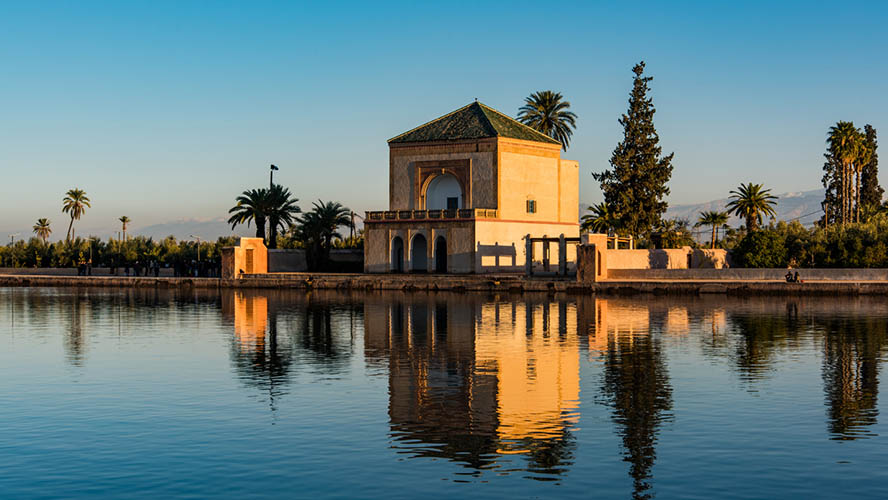
How to get to the Menara Gardens
There are several ways of getting to the Menara Gardens. It can even be a pleasant stroll, depending on the temperature and the time of day.
- On foot: from Jemaa el Fna Square. it is a 30-minute walk to the nearest entrance of the Menara Gardens (through the large olive grove). Follow Houmane al Fatouaki Avenue through some of the city’s most luxurious residential areas.
- By bus: close to Jemaa el Fna Square, you will find stops for city bus routes number 11 and 12, which will take you to several of the entrances to the Menara Gardens.
- By taxi or private vehicle: you can reach the nearest entrance to the Gardens just five or ten minutes from the Koutoubia Mosque along the same avenue.
- By horse-drawn carriage: this most romantic way to travel to the Menara Gardens is the favourite of many Moroccans, particularly couples. Agree the price with the driver before commencing your journey — charges are not high.




































































